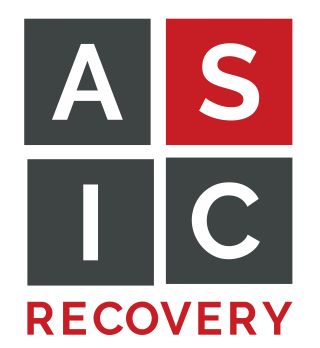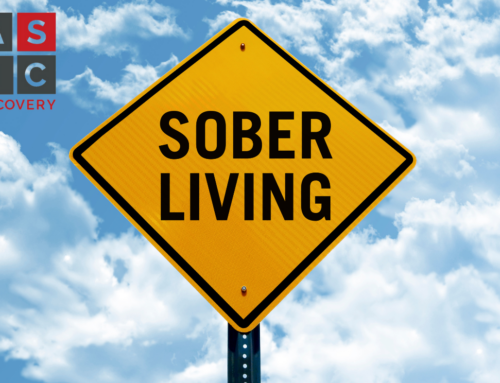GHB (Gamma Hydroxybutyrate) is a naturally occurring neurotransmitter in the brain, but it is more commonly known as a recreational drug that sees widespread use and abuse in the club or rave scene.
Typically, GHB is found in a liquid form that is odorless and colorless, making it difficult to detect. The amount required to feel its effects is also very small (less than the volume of a soda bottle cap), so it’s easy to hide, especially because it can simply be mixed into any drink to hide it.
This makes identifying GHB use in someone particularly difficult. Many users will mix it into a soda or energy drink, and without drinking it yourself, there’s no way to know that the drink has been spiked with GHB.
On top of that, because each dose is so small, it’s very easy to accidentally overdose on GHB. In fact, many users overdose accidentally because they’ve forgotten that a drink already has GHB in it (remember, it’s impossible to detect the GHB in the drink) and add another dose.
It’s often referred to as a “club drug” (a category that includes ecstasy, cocaine, and ketamine) given its popularity among and historical use by clubgoers in the 80s and 90s, mostly because it’s easy to hide on your person or in a drink.
GHB also has a darker side—it’s known as the “date rape drug” for the same reasons it’s popular in clubs: it has no taste, no odor, and can be easily poured into a drink quickly (because the volume of a dose is so small) without someone knowing. In large amounts, the effects are similar to alcohol, another drug that’s often involved in sexual assault.
Understanding what GHB is and the effects it can have on the body and mind is crucial for your safety and the well-being of those around you.
Understanding GHB: Its Uses and Misuses
GHB has legitimate uses in medical practice. It has been prescribed for the treatment of narcolepsy, a sleep disorder that causes excessive sleepiness and frequent daytime sleep attacks. However, its misuse far overshadows its legitimate use.
GHB is popular in the club scene because of its euphoric and sedative effects. When taken recreationally, it can induce a state of relaxation and sociability very similar to alcohol. However, GHB has a narrow window of safe use, and taking too much can lead to severe health risks, including unconsciousness, coma, and even death.
Though it’s still used as a date rape drug, many organizations have developed informational campaigns urging people to never leave their drinks unattended, to never drink a drink they haven’t watched someone make, and to never drink a drink someone hands them.
Some organizations have gone a step further, partnering with scientists to develop cups and other devices that will change color in the presence of GHB and other drugs, helping club-goers to have a safe experience without worrying about being drugged. There is even now a method of checking for GHB by using your smartphone.
On top of that, many clubs are fighting back against its use directly with policies about how drinks are made and distributed, no-tolerance policies for the use or possession of GHB, and the use of the above devices.
The Physical Effects of GHB Use, Long-term Use, and Overdose
GHB’s effects on the body and mind can vary greatly depending on the dose and the individual. At lower doses, it can produce feelings of euphoria, increased sociability, and enhanced sexual desire.
However, these effects can quickly turn negative with higher doses or when combined with other substances, such as alcohol or cocaine, leading to an overdose. The symptoms of a GHB overdose include:
- Nausea
- Dizziness
- Seizures
- Respiratory depression
- Coma
- Confusion
- Hallucinations
- Memory loss
Long-term use can lead to dependence and addiction with severe withdrawal symptoms when users try to quit. Many long-term users report a variety of symptoms, including:
- Heart disease
- Severe memory issues
- Extreme anxiety
- Breathing problems
Using any psychoactive drug for long periods comes with a lot of risks—this is just as true of GHB as any other drug.
The Dangers of Mixing Other Drugs with GHB
GHB is a dangerous drug among dangerous drugs—not only does GHB have a high potential for abuse and addiction, but its use can also lead to serious physical and mental health problems.
Its sedative effects can slow breathing and heart rate to dangerously low levels, leading to unconsciousness or death. However, GHB is rarely used by itself—users are highly likely to mix GHB with everything from methamphetamine to alcohol to opioids to benzodiazepines.
When combined with drugs that increase your heart rate (methamphetamine, amphetamines, ecstasy), GHB puts a heavy strain on your heart. Even if you don’t experience a heart attack, repeated use will damage your heart over time.
When combined with so-called downers, like heroin or benzodiazepines, the chance of overdosing skyrockets. All these drugs, on their own, can cause you to stop breathing. When combined, small doses of each can have the same effect on your breathing as a very large dose of just one.
If you suspect that someone has overdosed on GHB, it’s crucial to seek medical help immediately. GHB overdose is a medical emergency and can be life-threatening.
GHB Withdrawal: What to Expect
While not everyone who takes GHB will become physically addicted, many will. “Physically addicted” means that your body has developed a dependence on the drug—you will experience withdrawals if you stop.
If you have developed a tolerance to GHB after repeated use, it’s possible that you’ve also become physically dependent on the drug.
GHB withdrawal can be severe—more severe than even heroin withdrawal. Most people who have become physically addicted to GHB must undergo a medical detox.
The way GHB acts on the brain is very similar to alcohol. A sudden stop in GHB use can lead to a potentially life-threatening condition known as delirium tremens, the same condition that people who struggle with alcohol addiction get when they stop using alcohol abruptly. Symptoms include:
- Confusion
- Agitation
- Irritability
- Sleeping for over 24 hours
- Fever
- Rapid mood swings
- Severe shaking
- High blood pressure
- Rapid or irregular heartbeat
- Hallucinations
- Seizures
- Tremors
- Anxiety
- Insomnia
- Nausea
- Vomiting
Because of these serious dangers withdrawal from GHB should always be managed under medical supervision. Delerium tremens is always considered a medical emergency by medical providers.
Treatment and Recovery from GHB Addiction with ASIC Recovery Services
Recovery from GHB addiction is possible, but it requires professional help. Treatment typically involves a combination of medically supervised detoxification and cognitive behavioral therapy. This process can help manage withdrawal symptoms and address the underlying issues that led to your addiction.
Recovery is a long process that requires ongoing support. Participating in 12-step support groups and ongoing counseling can significantly increase the chances of long-term recovery.
If you or someone you know is struggling with GHB use, we can help.
At ASIC, our Intensive Outpatient Program (IOP), counseling programs, and Partial Hospitalization Program are dedicated to helping you develop healthier coping skills and build a supportive recovery network so that you can achieve long-term sobriety.



